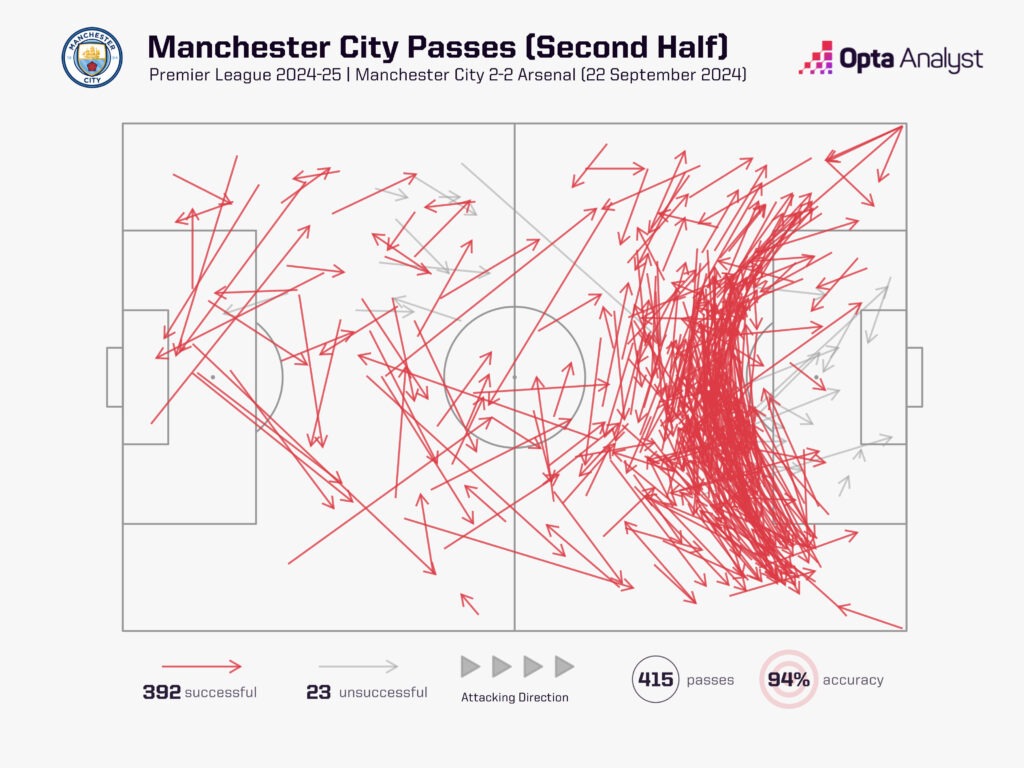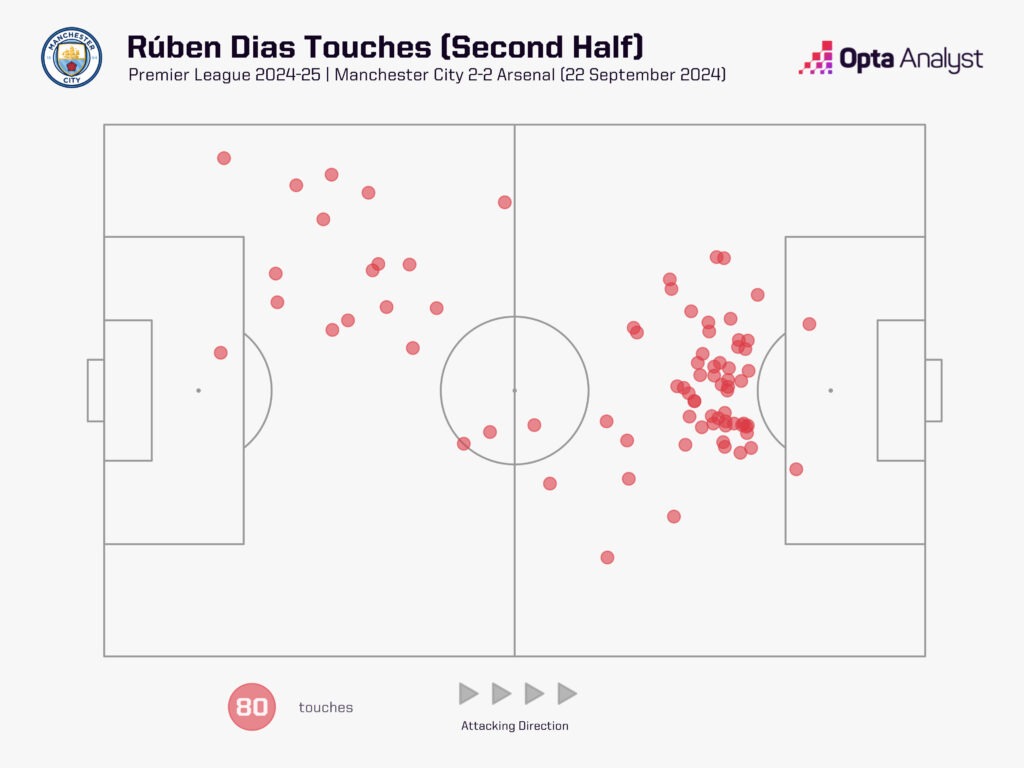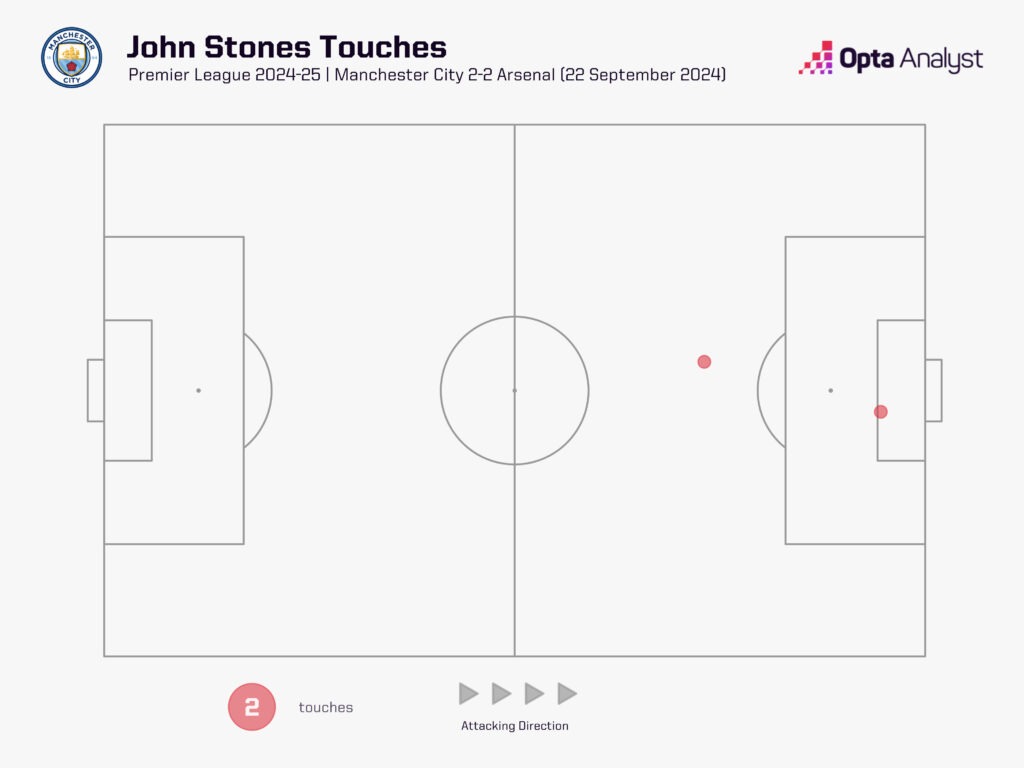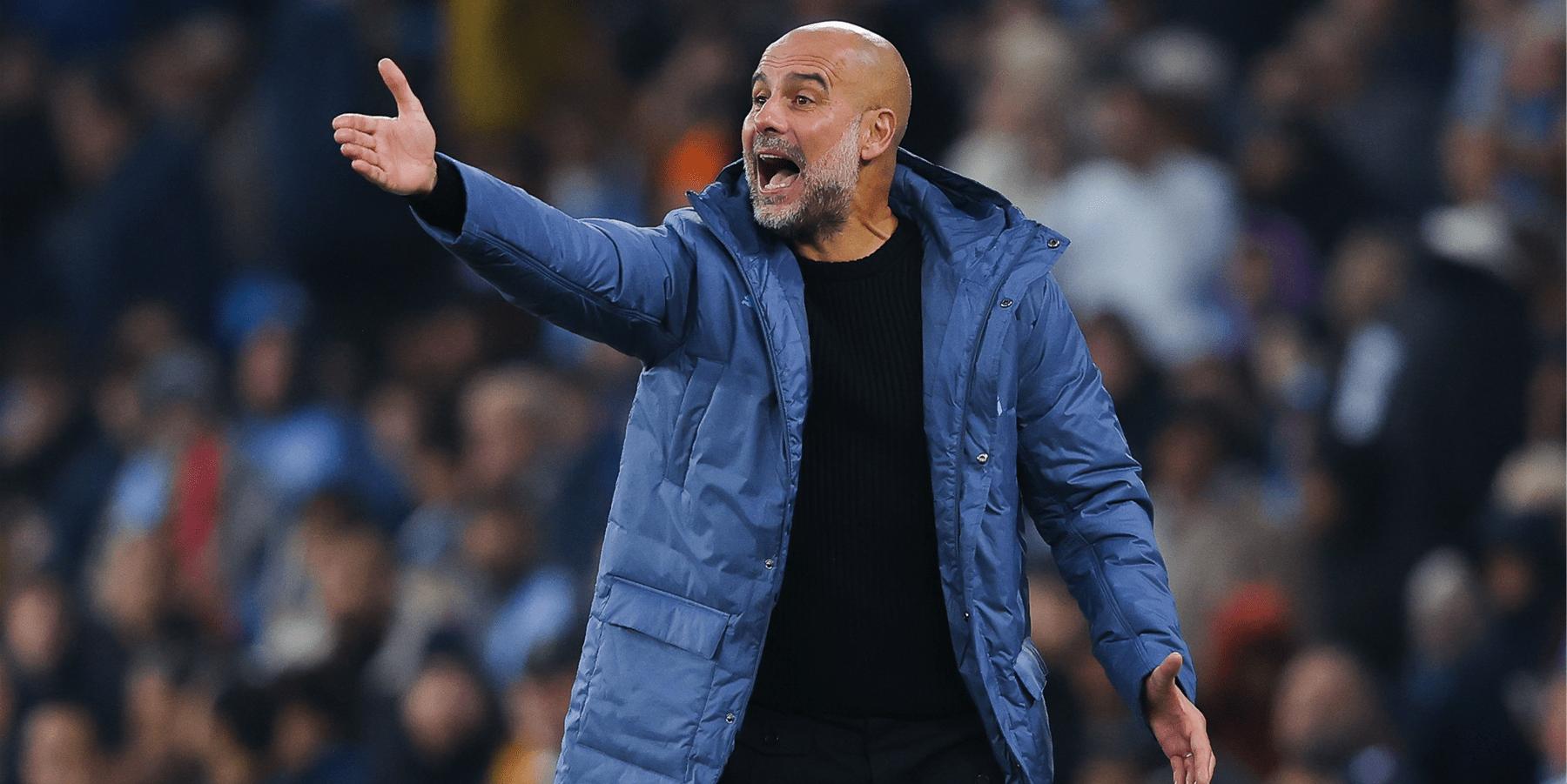In Sunday’s 2-2 draw at the Etihad, the Manchester City manager opted against changing his side’s approach even when Arsenal went down to 10 men. Was it the right decision?
Pep Guardiola has achieved so much in the game that it always feels slightly awkward to question his decisions.
He is the first manager ever to lead a team to four successive top-flight titles in men’s football in England, and has completely transformed the way the game is played with his own tactical innovations.
And yet, on Sunday afternoon at the Etihad, he made the call to stick with how things were going rather than make a change, and was very nearly made to pay for getting something terribly wrong.
With his team needing a goal against 10-man Arsenal, who were camped on the edge of their own box for the entire second half, it seemed painfully obvious that Guardiola needed to tweak something about City’s approach.
Watching his side pass the ball from side to side in front of Arsenal’s 6-3-0 low block, with defenders – and very much not creative players – Rúben Dias, Manuel Akanji and Kyle Walker seeing most of the ball and failing to make anything happen, it appeared as though his team needed something different.

Guardiola stuck with the same tactics with which his team had started the game, though, and City came within seconds of losing a massive match.
Ultimately, Guardiola got out of jail, with John Stones scrambling home a 98th-minute equaliser – the latest Premier League goal on record (since 2006-07) for City – so he may claim that his patience paid off.
But the goal came from a lucky rebound following a quickly-taken corner when a clearly-fatigued Arsenal switched off for a moment. The goal itself can’t reasonably be attributed to Guardiola’s persistence with his centre-backs moving the ball between them on the edge of the Arsenal box.
Dias, Akanji and Walker had 138, 118 and 125 touches each over the 90 minutes, or 381 between them. That’s 18 more than all of Arsenal’s players (363) had in total.
Dias seemed to be a big part of the problem. As Arsenal were playing with no striker, Dias was getting on the ball in front of the opposition’s midfield, with two banks of players to break down and no idea as to how to go about doing that.
He had 80 touches in the second half, most of them on the edge of Arsenal’s box, and without an idea about how to break lines with his passing, when he had the space he tried pot shots from range.
Only Erling Haaland (six) had more shots than Dias (five) for either side in the game, but Dias’ shots totalled just 0.18 expected goals – meaning his attempts had an average xG value of just 0.036. In other words, an average finisher would need 28 chances of that quality to be expected to find the net just once. And with all due respect, Dias is no average finisher.

Arsenal offered no counter-attacking threat, though Guardiola might argue that was in part because he had kept all three centre-backs on the pitch. Walker’s recovery pace and Dias’ ability in individual duels were useful in stopping Arsenal in their tracks and keeping the pressure on. City were relentless with how they kept the ball deep in Arsenal territory.
But did they really need all three of those defenders to maintain pressure on their opponents? Could two of them have done that job, with a more creative player brought on to conduct proceedings and – perhaps crucially – provide some kind of shooting threat, from the edge of the box?
What’s more, Guardiola also had Josko Gvardiol in his side’s out-of-possession defence but playing in midfield when City had the ball, which was 87.6% of the time in the second half. As a result, after the break, with City chasing a goal, Gvardiol was barely ever in the defensive line and was largely a bystander in the penalty area as City’s back three kept hold of the ball.
Guardiola waited until the 70th minute to introduce Phil Foden, but instead of removing one of the back three or Gvardiol, he took off Jérémy Doku, one of the best dribblers in the league, and surely one of the most likely players to create the moment of magic City needed.
It wasn’t until the 78th minute that the City manager finally took one of his centre-backs off, with Kyle Walker replaced by eventual match-winner Stones. Stones felt much better suited to trying to find a way through the Arsenal block than Walker, who ranked third in the match for shots, with four – all of which were from outside the box.
But Stones’ introduction didn’t actually change City’s approach. They still passed the ball around patiently in the hope of finding a gap in Arsenal’s structure; they still refused to get it wide and put crosses into the box, despite having big players in Gvardiol and now Stones on the pitch in a central attacking positions alongside Haaland.
That might well have been a deliberate tactic from Guardiola because in William Saliba and Gabriel Magalhães, Arsenal have centre-backs who would probably have been able to deal with any crosses, but the threat of balls in from wide would have at least moved the Arsenal defenders around a bit more and given them something else to think about other than whether Dias was going to pick out an impossible through ball that even the absent Kevin De Bruyne wouldn’t have spotted.
And while Stones provided the goal that could have a greater impact on the title race than any other scored so far this season, he can’t really have been said to have changed the flow or the direction of the game. He took up a similar role to Gvardiol in a midfield position, watching the play go by.
Before his shot to score the equaliser, Stones had recorded just one touch of the ball in 20 minutes on the pitch (12 in normal time and eight more added on).

In the end, it was Stones’ presence in the box that made the telling difference, and Guardiola was in an instant justified for his cautious approach. Drawing this game was infinitely better than losing it to a weakened and tired Arsenal side, and City managed to do that.
But should Guardiola have gone for the jugular earlier? Should he have worried less about conceding a third goal and focused more on finding a solution for his side to score two?
Only come May will we know for sure whether this will count as one point gained or two dropped for City.
Enjoy this? Subscribe to our football newsletter to receive exclusive weekly content. You should also follow our social accounts over on X, Instagram, TikTok and Facebook.
